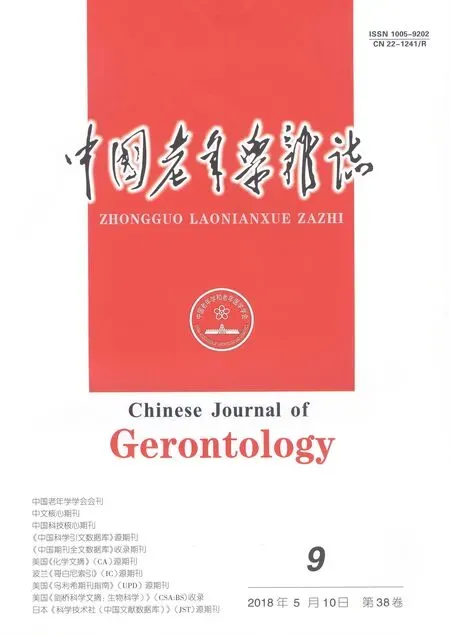血液同型半胱氨酸水平與不同亞型腦卒中相關性的Meta分析
王 莉 沈 娟 陳從新 陳朱備 沈曉君 宋遠見 劉志安
(徐州醫科大學,江蘇 徐州 221004)
腦卒中臨床上常分為缺血性腦卒中、出血性腦卒中或復發性腦卒中。高血壓、高脂血癥、糖尿病、心臟瓣膜病、吸煙、肥胖等會增加腦卒中的發生風險〔1,2〕,確定危險因素并加以控制有利于預測該疾病的發生,改善預后,降低死亡率。同型半胱氨酸(Hcy)是一種含硫氨基酸,對腦組織有毒性作用。本研究主要探究Hcy水平對不同亞型腦卒中發生風險的影響,明確相關風險因素。
1 資料與方法
1.1檢索策略 電子檢索Pubmed、Embase和Cochrane library等數據庫中所有相關文獻,同時手工檢索納入文獻的參考文獻,防止漏檢。年限設置為建庫至2017年10月,檢索詞包括:stroke,ischemic stroke,ischaemic stroke,hemorrhagic stroke,recurrent stroke,cerebral ischemia,brain ischemia,intracranial hemorrhage,homocystine,hyperhomocysteinaemia。兩名研究者獨立進行文獻的納入和質量評價工作,本研究的設計和實施均符合觀察性研究meta分析報告規范(MOOSE)〔3〕。
1.2納入與排除標準 納入標準:①前瞻性研究設計,包括前瞻性隊列研究和前瞻性病例對照研究;②暴露因素為Hcy水平,結局為不同亞型腦卒中事件,包括缺血性腦卒中、出血性腦卒中或復發性腦卒中,腦卒中確診基于嚴格的神經學檢查,經CT或磁共振成像(MRI)證實,符合世界衛生組織(WHO)對于腦卒中的診斷標準〔4〕;③控制混雜因素,即報告了腦卒中發生的校正后的相對比(RR)或比值比(OR),和95%可信區間(95%CI)。排除標準:①橫斷面研究、回顧性研究、綜述、動物實驗、病例報道等;②數據資料不完整,未報道校正后的RR或OR,和95%CI的研究;③重復發表的研究,選取最近發表的或資料最完整的研究納入。
1.3資料提取和文獻質量 評價兩名研究者使用同一個標準獨立提取資料,包括文章的作者、出版年份、國家、研究設計、樣本量、暴露水平、結局事件和隨訪等,存在不同觀點的地方與第三位研究者討論后得出一致結論。文獻質量評價均按照觀察性研究的NOS量表進行評分〔5〕。Newcastle Ottawa量表(NOS)評分標準適用于評價病例對照研究和隊列研究,通過3大塊共8個條目進行評價,包括人群的選擇、對比、暴露評價或結果評價,具體為,病例對照:①病例確定是否恰當;②病例的代表性;③對照的選擇;④對照的確定;⑤病例和對照的可比性;⑥暴露因素的確定;⑦病例和對照的調查方法;⑧無應答率。隊列研究:①暴露組的代表性;②非暴露隊列的選擇;③暴露的確定;④研究開始時尚無要觀察的結局指標;⑤暴露隊列和非暴露隊列的可比性;⑥結果的測定方法是否充分;⑦隨訪時間是否足夠長;⑧隨訪的完整性。其中對比條目最高可得2分,總分0~9分,低于5分認為文獻質量較低,高于5分則認為文獻質量較高。
1.4統計學方法 Meta分析使用STATA(12.0版本,TX)軟件數據分析,血液中最高水平Hcy人群相對于最低水平不同亞型腦卒中發病風險用RR表示,用糾正后的RR和95%CI評價二者的相關性。采用CochranQ檢驗評價納入文獻的異質性,若P<0.05,I2>50%,則認為研究存在異質性,應采用隨機效應模型評價,反之采用固定效應模型。若文獻數量大于10篇,則用Begg漏斗圖和Egger線性回歸評價發表偏倚,P<0.10表示差異有統計學意義〔6〕。
2 結 果
2.1檢索結果和納入文獻的基本資料 初次檢得924篇相關文獻,剔除重復納入的176篇,通過閱讀標題和摘要,剔除無關、不符合納入標準的717篇,剩余31篇,查找閱讀全文,剔除無關或數據不完整的文獻16篇,最終共納入15篇〔7~21〕符合條件的文獻,涉及的總病人數33 094例。其中,11項〔7~11,13~15,17,18,20〕研究報道了Hcy水平與缺血性腦卒中的相關性,4項〔10,14,15,17〕研究報道了Hcy水平與出血性腦卒中的相關性,5項〔12,16,19~21〕研究報道了Hcy水平與復發性腦卒中的相關性。各項研究的基本資料見表1。

表1 納入文獻的基本資料

續表1 納入文獻的基本資料
2.2Meta分析結果 各項研究均存在異質性,所以均使用隨機效應模型。血液中高水平Hcy人群相對于低水平Hcy在缺血性腦卒中、出血性腦卒中和復發性腦卒中合并的RR和95%CI分別是1.71(95%CI:1.28~2.28)、2.08(95%CI:0.92~4.69)和1.24(95%CI:1.04~1.49)。缺血性腦卒中組文獻數多于10篇,Begg漏斗圖視覺上對稱,Egger線性回歸進一步檢驗無發表偏倚(t=0.01,P=0.992)。見圖1。

圖1 血液Hcy水平與缺血性腦卒中關系Meta分析Begg漏斗圖
3 討 論
缺血性腦卒中在腦卒中所占比例最多,約為70%,主要是由于血管狹窄閉塞等因素所致的腦組織缺血缺氧。升高的Hcy會增加腦組織損傷、神經細胞毒性對血管內皮損傷,Chen等〔22〕認為高Hcy是與缺血性腦卒中發生密切相關的危險因素,有研究〔23〕表示低水平Hcy可減少缺血性腦卒中的發病風險。復發性腦卒中是指初次發生腦卒中后,預后不良又再次發生了該病,Hcy水平越高,腦卒中越嚴重,預后更不佳,更易復發,因而Hcy與復發性腦卒中也存在相關性。對于出血性腦卒中,Hcy與其相關性的研究較少,在納入的4篇文獻中只有Hultdin等〔17〕認為二者關聯性較大,其余均顯示關聯不明顯。
本研究結果說明Hcy水平與缺血性腦卒中和復發性腦卒中發生風險呈正相關,高水平Hcy人群缺血性腦卒中和出血性腦卒中的發生風險分別是低水平的1.71和1.24倍,這分別與探討Hcy和缺血性腦卒中相關性的研究〔8,10,11,13,14,18,20〕和探討Hcy和復發性腦卒中相關性的研究〔12,16,19,21〕結論一致,雖然結果也顯示高水平Hcy會增加出血性腦卒中發生風險,但是合并后95%可信區間覆蓋1,差異無統計學意義。Huang等〔24〕調查了16 867例成人,認為降低Hcy可以減少腦卒中首次發作的風險,Marti-Carvajal等〔25〕認為降低Hcy水平的干預措施可以預防包括腦卒中在內的腦血管疾病的發生。所以,若能明確Hcy與腦卒中發生的相關性,并且能精確到不同亞型腦卒中,將更加有利于對相關疾病的預防。
4 參考文獻
1Lozano R,Naghavi M,Foreman K,etal.Global and regional mortality from 235 causes of death for 20 age groups in 1990 and 2010:a systematic analysis for the global burden of disease study 2010〔J〕.Lancet,2012; 380(9859):2095-128.
2郭麗花,胡如英,龔巍巍,等.腦卒中危險因素研究進展〔J〕.中國老年學雜志,2017;37(17):4413-6.
3Stroup DF,Berlin JA,Morton SC,etal.Meta-analysis of observational studies in epidemiology:a proposal for reporting.Meta-analysis Of Observational studies in epidemiology(MOOSE) group〔J〕.JAMA,2000;283(15):2008-12.
4Recommendations on stroke prevention,diagnosis,and therapy.Report of the WHO task force on stroke and other cerebrovascular disorders〔J〕.Stroke,1989;20(10):1407-31.
5Stang A.Critical evaluation of the Newcastle-Ottawa scale for the assessment of the quality of nonrandomized studies in meta-analyses〔J〕.Eur J Epidemiol,2010;25(9):603-5.
6Egger M,Davey Smith G,Schneider M,etal.Bias in meta-analysis detected by a simple,graphical test〔J〕.BMJ,1997;315(7109):629-34.
7Verhoef P,Hennekens CH,Malinow MR,etal.A prospective study of plasma homocyst(e)ine and risk of ischemic stroke〔J〕.Stroke,1994;25(10):1924-30.
8Bostom AG,Rosenberg IH,Silbershatz H,etal.Nonfasting plasma total homocysteine levels and stroke incidence in elderly persons:the framingham study〔J〕.Ann Intern Med,1999; 131(5):352-5.
9Fallon UB,Elwood P,Ben-Shlomo Y,etal.Homocysteine and ischaemic stroke in men:the caerphilly study〔J〕.J Epidemiol Community Health,2001; 55(2):91-6.
10Iso H,Moriyama Y,Sato S,etal.Serum total homocysteine concentrations and risk of stroke and its subtypes in Japanese〔J〕.Circulation,2004; 109(22):2766-72.
11Sacco RL,Anand K,Lee HS,etal.Homocysteine and the risk of ischemic stroke in a triethnic cohort:the Northern Manhattan study〔J〕.Stroke,2004; 35(10):2263-9.
12Bos MJ,van Goor ML,Koudstaal PJ,etal.Plasma homocysteine is a risk factor for recurrent vascular events in young patients with an ischaemic stroke or TIA〔J〕.J Neurol,2005; 252(3):332-7.
13Virtanen JK,Voutilainen S,Happonen P,etal.Serum homocysteine,folate and risk of stroke:Kuopio Ischaemic Heart Disease Risk Factor(KIHD) study〔J〕.Eur J Cardiovasc Prev Rehabil,2005; 12(4):369-75.
14Cui R,Moriyama Y,Koike KA,etal.Serum total homocysteine concentrations and risk of mortality from stroke and coronary heart disease in Japanese:the JACC study〔J〕.Atherosclerosis,2008; 198(2):412-8.
15Sun Y,Chien KL,Hsu HC,etal.Use of serum homocysteine to predict stroke,coronary heart disease and death in ethnic Chinese.12-year prospective cohort study〔J〕.Circ J,2009; 73(8):1423-30.
16Zhang W,Sun K,Chen J,etal.High plasma homocysteine levels contribute to the risk of stroke recurrence and all-cause mortality in a large prospective stroke population〔J〕.Clin Sci(Lond),2009; 118(3):187-94.
17Hultdin J,Van Guelpen B,Winkvist A,etal.Prospective study of first stroke in relation to plasma homocysteine and MTHFR 677C>T and 1298A>C genotypes and haplotypes-evidence for an association with hemorrhagic stroke〔J〕.Clin Chem Lab Med,2011; 49(9):1555-62.
18Han L,Wu Q,Wang C,etal.Homocysteine,ischemic stroke,and coronary heart disease in hypertensive patients:a population-based,prospective cohort study〔J〕.Stroke,2015; 46(7):1777-86.
19Ji Y,Song B,Xu Y,etal.Prognostic significance of homocysteine levels in acute ischemic stroke:a prospective cohort study〔J〕.Curr Neurovasc Res,2015; 12(4):334-40.
20Shi Z,Guan Y,Huo YR,etal.Elevated total homocysteine levels in acute ischemic stroke are associated with long-term mortality〔J〕.Stroke,2015; 46(9):2419-25.
21Kumral E,Saruhan G,Aktert D,etal.Association of hyperhomocysteinemia with stroke recurrence after initial stroke〔J〕.J Stroke Cerebrovasc Dis,2016; 25(8):2047-54.
22Chen S,Dong Z,Cheng M,etal.Homocysteine exaggerates microglia activation and neuroinflammation through microglia localized STAT3 overactivation following ischemic stroke〔J〕.J Neuroinflammation,2017;14(1):187.
23Finsterer J.Low risk of ischaemic stroke in hyperhomocysteinaemia〔J〕.Lancet Neurol,2017;16(9):682-3.
24Huang X,Li Y,Li P,etal.Association between percent decline in serum total homocysteine and risk of first stroke〔J〕.Neurology,2017;89(20):2101-7.
25Marti-Carvajal AJ,Sola I,Lathyris D,etal.Homocysteine-lowering interventions for preventing cardiovascular events〔J〕.Cochrane Database Syst Rev,2009;(4):Cd006612.

